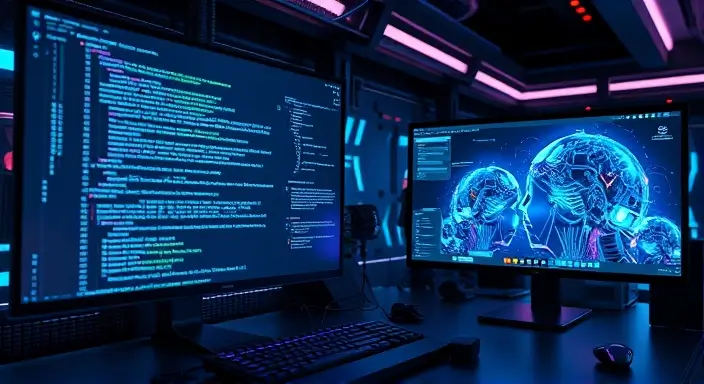Introduction to AI Art Generation
AI art generation allows you to create stunning and original artwork using the power of artificial intelligence. Whether you’re a seasoned artist or just starting, this tool enables you to generate beautiful and unique pieces with ease. In this guide, we’ll explore how AI art generation can enhance your creative process and produce amazing artwork.
Artificial Intelligence (AI) has been making significant strides in various fields, and art is no exception. AI Art Generation is a revolutionary technology that combines creativity with computational algorithms, enabling the creation of stunning visual art pieces with minimal human intervention. Whether you’re an artist looking to enhance your work or an enthusiast exploring the digital art realm, AI art generation opens new doors for creativity.
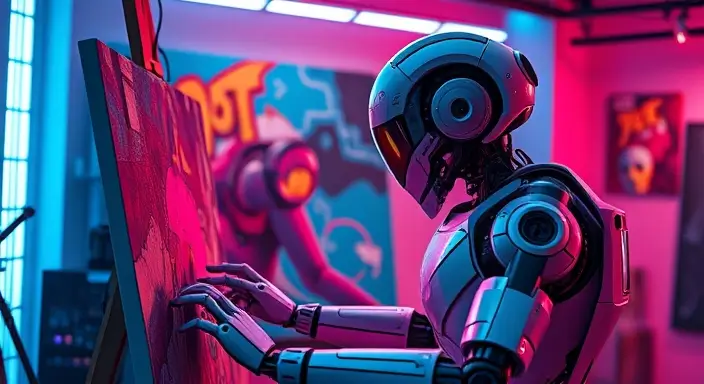
What is AI Art?
AI Art refers to the creative output generated by artificial intelligence systems. These systems, powered by machine learning and neural networks, analyze and learn from thousands of artworks, styles, and techniques to produce original art. AI Art encompasses various mediums, including painting, music, and sculpture, but its most prominent presence is in digital visual art.
From abstract compositions to hyper-realistic portraits, AI Art demonstrates the fusion of human ingenuity and machine intelligence. Tools like DALL·E, DeepArt, and Runway ML are among the most popular platforms making AI art accessible to all.
Why It Matters:
- AI democratizes art creation, allowing individuals with no artistic background to create masterpieces.
- It introduces unique perspectives by blending traditional and modern techniques.
- AI Art serves as a tool for inspiration and innovation for professional artists.
How AI is Revolutionizing Creativity
AI is not just a tool but a collaborator in the creative process. Here’s how it’s reshaping the world of art:
- Accessibility for Everyone:
AI tools eliminate the need for advanced skills or years of training, enabling anyone to create art. - Enhancing Productivity:
Artists can save time by automating repetitive tasks like shading, color corrections, and concept sketches. - New Art Forms:
AI introduces entirely new art forms and styles that would be difficult to conceive traditionally. - Customization and Personalization:
AI allows users to input preferences, ensuring each creation is tailored to individual tastes or project needs. - Collaborative Potential:
Artists and AI working together create hybrid pieces that neither could achieve independently.
Real-World Applications:
- Marketing and branding campaigns using AI-designed visuals.
- Personalized illustrations for books, websites, or social media.
- Concept art for gaming and movies.
Tools and Processes for AI Art Generation
AI art generation is powered by advanced tools and processes that leverage sophisticated algorithms and machine learning models. Understanding these processes and the tools available will enable you to produce stunning AI-generated art efficiently.
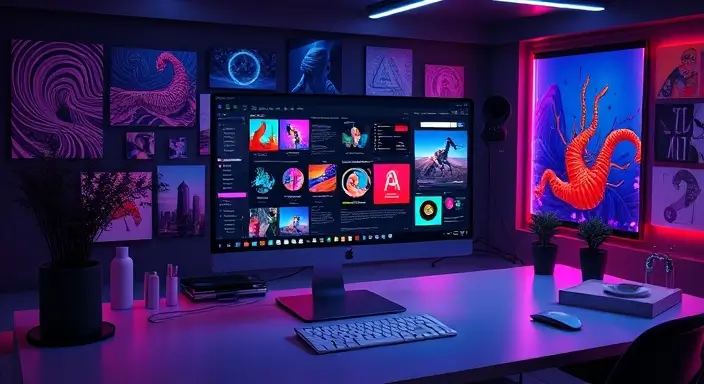
Text-to-Image Generation
Text-to-image generation allows users to create art by simply describing their desired outcome in natural language. Tools like DALL·E, Stable Diffusion, and MidJourney excel in interpreting text prompts to generate images that align with user descriptions.
How It Works:
- Users input descriptive prompts like “a futuristic city at sunset with flying cars.”
- The AI analyzes the text and maps it to visual patterns using trained datasets.
- It produces unique images based on the prompt.
Applications:
- Concept art for games, movies, and design projects.
- Social media visuals, advertisements, and branding materials.
Image-to-Image Transformation
Image-to-image transformation enhances or modifies existing images to create new versions. This process can stylize photos, enhance details, or transform sketches into realistic images.
How It Works:
- Users upload a base image and specify desired changes, such as applying a particular art style.
- The AI processes the image, referencing its database to apply the requested modifications.
- The final output retains the essence of the original image with the applied enhancements.
Popular Use Cases:
- Turning rough sketches into detailed art.
- Applying artistic styles like Van Gogh or Picasso to photos.
- Enhancing low-quality images or restoring old photographs.
Prompt Engineering and Optimization
Crafting effective prompts and optimizing settings is crucial to achieving the best AI-generated art. Prompt engineering involves refining text inputs to guide the AI toward desired outcomes.
Writing Effective Prompts
Effective prompts are detailed and specific, helping the AI generate accurate results. Include:
- Descriptive Elements: Specify objects, styles, and environments.
- Art Style: Mention styles like “minimalist,” “abstract,” or “hyper-realistic.”
- Colors and Themes: Define color palettes or mood settings.
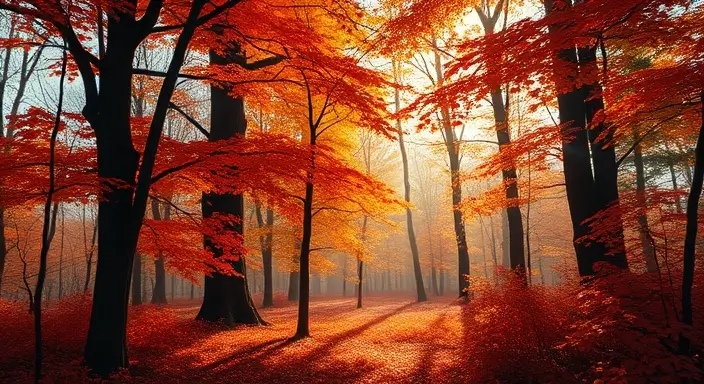
Adjusting Settings for Best Results
Most AI art tools allow users to adjust settings for greater control:
- Resolution: Higher resolution ensures better clarity and detail.
- Iterations: More iterations refine the output.
- Style Strength: Adjust to balance the base input with stylization.
Generating High-Quality Outputs
To achieve high-quality results:
- Use a mix of specific and flexible prompts to allow for creative interpretations.
- Experiment with different settings and algorithms to refine outcomes.
- Save and compare multiple iterations to select the best result.
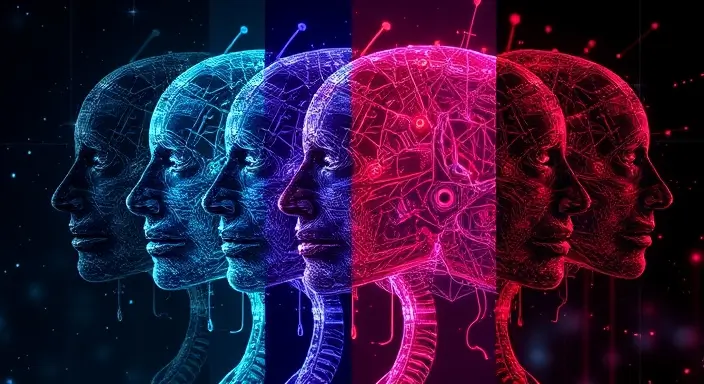
Explore Top AI Art Generators
The growing popularity of AI art generators has led to the development of numerous tools, each with unique features and capabilities. From versatile all-in-one models to specialized tools for creating safe-for-work (SFW) or not-safe-for-work (NSFW) content, choosing the right tool depends on your specific needs. This section will guide you through the top AI art generators and the critical factors to consider.
All-in-One AI Models
All-in-one AI models are versatile platforms that cater to a wide range of creative needs, from generating abstract art to hyper-realistic illustrations. These tools provide robust functionality and are often user-friendly, making them ideal for beginners and professionals alike.
Key Features:
- Wide Range of Styles: From photorealistic to abstract and surreal.
- Customizability: Users can fine-tune settings to achieve desired results.
- Cross-Platform Integration: Many tools integrate with other software for seamless workflows.
Top Tools:
- DALL·E: Known for its impressive text-to-image capabilities and artistic versatility.
- Runway ML: A comprehensive platform for image generation, video editing, and more.
- Artbreeder: Focused on creating portraits, landscapes, and concept art.
Verified Tools for NSFW and SFW Art
Creating art responsibly is crucial, especially when generating NSFW content. Verified tools ensure that ethical considerations are met and provide filters to toggle between SFW and NSFW modes.
SFW Art Generators:
- DeepArt: Specializes in stylizing images with filters inspired by famous artists.
- Stable Diffusion: Offers flexible settings to create professional-grade art while adhering to community guidelines.
NSFW Art Generators (Use Responsibly):
- NovelAI: Known for generating both SFW and NSFW content with a focus on privacy.
- Unstable Diffusion: A community-driven tool that allows NSFW art generation with user consent.
Ethical Considerations:
- Always respect copyright and avoid creating harmful or offensive content.
- Use NSFW tools responsibly and only for private or consensual projects.
Speed, Quality, and Restrictions: What to Consider
Selecting the best AI art generator involves balancing speed, quality, and any restrictions imposed by the platform. Each tool offers unique strengths, so understanding your priorities is essential.
Speed:
- Some tools prioritize faster processing, suitable for concept art and quick drafts.
- Example: DALL·E offers rapid image generation with decent quality.
Quality:
- High-resolution outputs are critical for professional use, such as print media or marketing.
- Example: MidJourney excels in delivering intricate details and artistic textures.
Restrictions:
- Platforms like Stable Diffusion impose ethical guidelines and may restrict certain themes.
- Some tools have usage limits or require subscriptions for premium features.
Comparison Table:
| Tool | Speed | Quality | Restrictions |
|---|---|---|---|
| DALL·E | Fast | High | Ethical Guidelines |
| MidJourney | Moderate | Very High | Subscription-Based |
| NovelAI | Variable | High | NSFW Limitations |
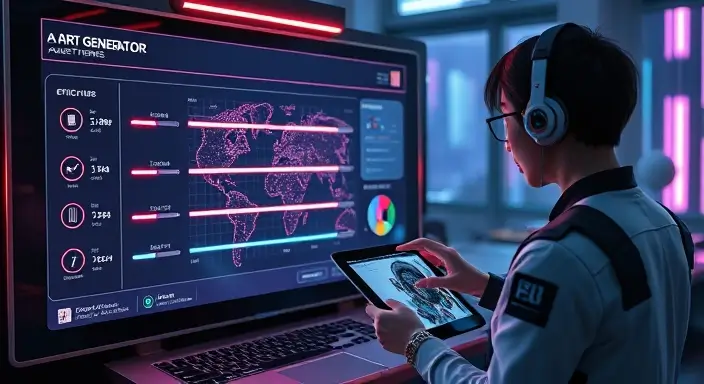
Creation Settings and Features
AI art generators offer a variety of settings and features that allow users to fine-tune their creations. By understanding and optimizing these options—such as text prompts, artistic styles, and resolution settings—you can achieve the best results tailored to your creative vision.
Text Prompts
Text prompts are the foundation of AI-generated art. A well-crafted prompt provides clear and descriptive input for the AI, ensuring the output aligns with your expectations.
Tips for Writing Effective Prompts:
- Be Specific: Include details about subjects, colors, and environments.
- Example: “A serene mountain landscape at sunrise with vibrant orange and pink skies.”
- Incorporate Styles: Mention the artistic style or influence.
- Example: “A surreal cityscape in the style of Salvador Dalí.”
- Use Keywords: Add key descriptors like “vibrant,” “minimalist,” or “photorealistic.”
Experimentation:
- Test variations of prompts to explore diverse outputs.
- Combine abstract and literal descriptions for unique results.
Artistic Styles and Models
AI art tools often provide a range of artistic styles and models to choose from, enabling users to tailor the look and feel of their creations.
Artistic Styles:
- Classical: Mimicking famous styles like Impressionism or Renaissance.
- Modern: Abstract, surreal, or minimalist designs.
- Photorealistic: High-detail outputs resembling real-life photography.
AI Models:
- Different models specialize in various styles or techniques.
- Example:
- Stable Diffusion: Known for versatility and customization.
- MidJourney: Ideal for producing artistic, textured visuals.
- DALL·E: Excels in realistic and concept-driven images.
Initial Resolution and Runtime Adjustments
Resolution and runtime settings are critical factors influencing the quality and efficiency of AI-generated art.
Initial Resolution:
- Low Resolution: Faster generation for drafts and concept development.
- High Resolution: Best for final outputs intended for printing or professional use.
Runtime Adjustments:
- Iterations: Increasing the number of iterations refines the output but requires more processing time.
- Upscaling: Tools like Gigapixel AI or integrated features in Stable Diffusion can enhance resolution without sacrificing quality.
Balancing Speed and Quality:
- For quick ideas, opt for lower resolutions and fewer iterations.
- For detailed, polished artwork, allocate more runtime and enable advanced features.
Impact and Applications of AI Art
AI art has revolutionized the creative industry, influencing income opportunities, ethical considerations, and sustainability. Understanding these impacts helps assess the broader implications of AI-generated art in society and industry.
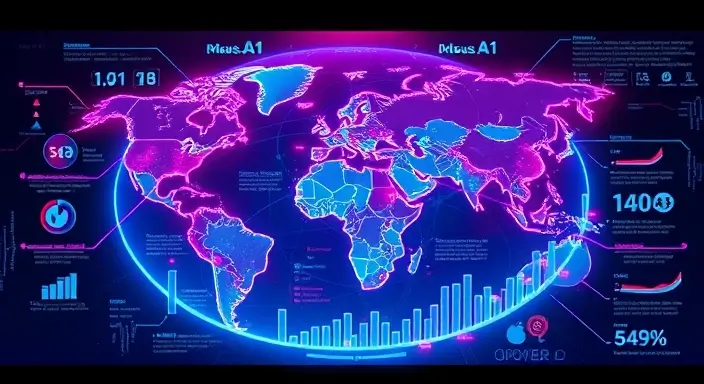
Income and Employment Impacts
The emergence of AI art has created new avenues for income generation and transformed traditional creative industries. However, it also raises concerns about job displacement.
Positive Impacts:
- Democratization of Art:
- AI tools allow individuals with no formal art training to create and sell art.
- Platforms like Etsy and ArtStation are witnessing an influx of AI-generated works.
- New Job Roles:
- Prompt Engineers: Professionals skilled in crafting effective AI prompts.
- AI Art Consultants: Experts who advise on integrating AI into creative workflows.
- Cost-Effective Solutions:
- Businesses use AI-generated art for marketing and design at a fraction of traditional costs.
Challenges:
- Job Displacement:
- Traditional artists face competition from AI tools, which can produce similar outputs faster.
- Market Saturation:
- The rise of AI-generated art may devalue original, handcrafted works.
Ethical Considerations (Bias, Copyright, Deception)
AI art raises significant ethical concerns, from biases in datasets to copyright issues and potential misuse.
Bias in Datasets:
- AI models learn from datasets that may contain cultural, racial, or gender biases.
- This can lead to outputs that reinforce stereotypes or exclude minority representations.
Copyright Issues:
- AI often learns by analyzing existing artworks, raising questions about intellectual property.
- Artists have reported unauthorized use of their works in AI training datasets.
- Legal frameworks for AI-generated content are still evolving.
Deception and Misinformation:
- Hyper-realistic AI art can be misused to create fake identities, misleading visuals, or deepfakes.
- Ethical usage policies and content verification systems are essential to mitigate risks.
Sustainability and Power Usage
AI art generation involves computational processes that consume significant energy, raising concerns about sustainability.
Environmental Impact:
- High Energy Consumption: Training large AI models requires substantial computational power, contributing to carbon emissions.
- Data Centers: The infrastructure supporting AI art tools relies on power-intensive servers.
Sustainability Efforts:
- Optimized Algorithms:
- Researchers are developing energy-efficient models that minimize resource usage.
- Green Data Centers:
- Companies are investing in renewable energy sources to power their servers.
- User Practices:
- Encouraging efficient use of AI tools (e.g., limiting iterations) to reduce energy consumption.
Balancing Creativity and Sustainability:
- While AI art democratizes creativity, users and developers must prioritize eco-conscious practices to ensure a sustainable future.
Frequently Asked Questions
As AI art tools become more accessible, many users have questions about selecting the best tools and optimizing their results. This section answers some of the most common inquiries..
Best AI Art Generators for Specific Needs
Choosing the right AI art generator depends on your project goals and specific requirements. Here are recommendations based on common use cases:
1. For High-Quality Artistic Visuals
- Tool: MidJourney
- Why: Known for creating highly detailed and textured art, perfect for posters, concept art, and high-end illustrations.
- Use Case: “Designing a surreal fantasy landscape.”
2. For Professional Marketing Content
- Tool: DALL·E
- Why: Versatile and easy to use for producing polished visuals aligned with brand themes.
- Use Case: “Generating images for ad campaigns and social media posts.”
3. For Character Design
- Tool: Artbreeder
- Why: Specializes in creating customizable portraits and characters for games, comics, or stories.
- Use Case: “Developing unique character concepts for a graphic novel.”
4. For Quick Prototypes
- Tool: Stable Diffusion
- Why: Offers fast processing for generating drafts or rough concepts.
- Use Case: “Testing variations of an abstract art style.”
Tips for Maximizing Results with Online Generators
Optimizing the way you use AI art tools can significantly improve the quality of your results. Here are practical tips for maximizing output:
1. Start with a Clear Vision
- Write detailed prompts describing the subject, style, color scheme, and setting.
- Example: “A futuristic city skyline at sunset with glowing neon lights, in the style of cyberpunk.”
2. Experiment with Variations
- Use slightly modified prompts to explore different interpretations of your idea.
- Save multiple outputs and compare results to find the best fit.
3. Adjust Tool Settings
- Increase resolution for high-quality prints or professional use.
- Experiment with runtime settings like iterations or style strength for more refined results.
4. Leverage Community Inputs
- Browse galleries or forums where users share their prompts and outputs for inspiration.
- Tools like MidJourney or Stable Diffusion often have active communities offering guidance.
5. Post-Processing
- Enhance outputs with photo editing software like Photoshop or GIMP for additional polish and customization.
More AI Creations and Resources
AI art generation isn’t limited to visual creativity—it opens doors to various tools, features, and resources that enhance accessibility, functionality, and user experience. This section highlights featured tools and secure options for monetization and integration.
Featured Creations (e.g., NightCafe, Other Tools)
Several platforms specialize in creating unique and diverse AI-generated art. These tools stand out for their creativity, user-friendly interfaces, and advanced customization options.
1. NightCafe
- Features:
- Offers multiple art generation styles, including surreal, abstract, and photorealistic.
- Community-driven platform where users can share and explore creations.
- Why Choose It:
- Ideal for both beginners and professionals looking to create stunning visuals.
- Popular Use Cases:
- Artwork for personal projects, social media posts, and NFTs.
2. Dream by Wombo
- Features:
- Creates dreamlike, imaginative visuals using minimal input.
- Emphasizes accessibility with a mobile-friendly interface.
- Why Choose It:
- Best for quick and creative outputs on the go.
- Popular Use Cases:
- Fantasy-themed art and casual creative exploration.
3. Deep Dream Generator
- Features:
- Specializes in creating abstract and psychedelic art.
- Allows users to upload their own images as a base for transformation.
- Why Choose It:
- Perfect for experimental and artistic outputs.
- Popular Use Cases:
- Artistic inspirations, abstract designs, and unique wallpapers.
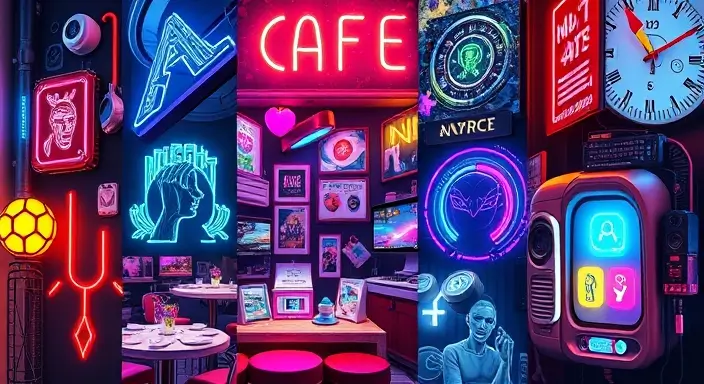
Secure Payment and API Options
For professionals, businesses, or developers, AI art platforms often offer secure payment methods and API integration options. These features expand the usability of AI-generated content across various applications.
1. Secure Payment Options
- Subscription Plans:
- Most platforms offer tiered plans to cater to hobbyists and professionals.
- Examples: Monthly subscriptions on tools like NightCafe or DALL·E.
- One-Time Payments:
- Pay-per-use models for users needing occasional access.
- Example: Purchasing credits on Artbreeder.
- Secure Gateways:
- Platforms implement encryption and trusted gateways like PayPal or Stripe.
2. API Integration
- Features:
- APIs allow businesses to incorporate AI art tools into their apps or workflows.
- Examples: Generating custom visuals for e-commerce websites or mobile apps.
- Popular APIs:
- Stable Diffusion API: Flexible and scalable for developers.
- DALL·E API: Ideal for integrating advanced text-to-image capabilities.
- Benefits:
- Automate tasks, save time, and scale content creation for business needs.
Monetization Opportunities:
- Artists can sell AI-generated art through integrated marketplaces or external platforms like Etsy.
- Developers can build unique apps leveraging AI art APIs.
